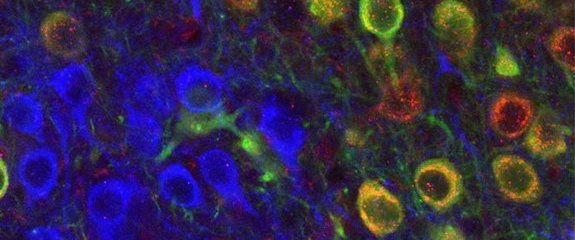Separate cell types encode memory’s time, place

Distinct groups of brain cells stamp memories with place and time information, new research suggests. The results, published in the Sept. 23 Neuron, provide clues to how the brain weaves together different aspects of a scene to form cohesive memories.
Cells in a brain region called the entorhinal cortex of a mouse can be divided into two groups: island cells, which cluster into small groups, and surrounding ocean cells. The new work “shows very cleanly that those two cell populations likely mediate different functions,” says functional neuroanatomist Menno Witter of the Norwegian University of Science and Technology in Trondheim. Ocean cells help detect where a memory is formed, while island cells handle aspects of time, experiments on mice reveal.


